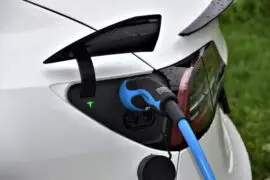Tesla vehicles are renowned for their cutting-edge technology, delivering an unparalleled driving experience that extends to their advanced climate control systems. However, even the most sophisticated technology can encounter issues, and one of the common concerns among Tesla owners is the malfunctioning of the heat pump. When the Tesla heat pump not working as expected, it can lead to discomfort, reduced energy efficiency, and potential damage to the system. In this comprehensive guide, we delve into the common symptoms of a malfunctioning Tesla heat pump, the importance of addressing such issues promptly, and a step-by-step troubleshooting approach to resolve these issues effectively.

Contents
Common Symptoms of a Malfunctioning Tesla Heat Pump
Insufficient Heating or Cooling:
One of the primary indicators of a malfunctioning Tesla heat pump is the inability to provide adequate heating during cold weather or cooling during hot weather. You may notice that the cabin temperature does not reach the desired level despite setting the climate control system appropriately.
Strange Noises:
Unusual noises coming from the heat pump system, such as grinding, whirring, or banging sounds, can signify underlying issues. These noises may occur during the startup, operation, or shutdown of the heat pump.
Unusual Odors:
If you detect strange odors, such as a musty or burnt smell, emanating from the vents when the heat pump is in use, it could indicate problems with the system. These odors may result from mold or debris buildup within the heat pump components or electrical issues.
Inconsistent Airflow:
A malfunctioning heat pump may lead to inconsistent airflow from the vents. You may experience weak or fluctuating airflow, which can impact the efficiency of heating or cooling inside the vehicle.
Dashboard Warnings:
Pay attention to any warning lights or messages on the Tesla dashboard related to the climate control system. These warnings, such as “Climate Control System Malfunction” or similar alerts, indicate that the heat pump requires attention and troubleshooting.
Reduced Energy Efficiency:
A malfunctioning heat pump can lead to increased energy consumption without corresponding improvements in heating or cooling performance. If you notice a sudden spike in energy usage or reduced range on your Tesla, it could be due to heat pump issues.
System Unresponsiveness:
Another sign of a malfunctioning heat pump is unresponsiveness or delays in adjusting settings through Tesla’s climate control interface. This may include delays in changing temperature settings, fan speed, or mode selection.
Importance of Addressing Heat Pump Issues Promptly
Addressing heat pump malfunctions promptly is crucial for several reasons, as it directly impacts the overall performance and longevity of your Tesla vehicle’s climate control system.
Maintaining Comfort:
A properly functioning heat pump ensures that you can maintain a comfortable interior temperature inside your Tesla, regardless of external weather conditions. Promptly addressing heat pump issues prevents discomfort during extreme temperatures, ensuring a pleasant driving experience for you and your passengers.
Ensuring Energy Efficiency:
A malfunctioning heat pump can lead to increased energy consumption as the system works harder to achieve desired heating or cooling levels. This results in reduced energy efficiency and may impact your Tesla’s overall range per charge. By addressing heat pump issues promptly, you can optimize energy usage and preserve the vehicle’s efficiency.
Avoiding Potential Damage:
Ignoring heat pump malfunctions can potentially lead to more severe damage to the climate control system or other related components in your Tesla. For instance, prolonged overheating or overcooling due to a malfunctioning heat pump can strain the system, leading to costly repairs or replacements down the line. Addressing issues promptly helps prevent further damage and costly repairs.

Preserving System Longevity:
Regular maintenance and timely troubleshooting of heat pump issues contribute to prolonging the overall longevity of your Tesla’s climate control system. By addressing issues promptly, you can prevent wear and tear on critical components, ensuring the system continues to operate efficiently and reliably over time.
Enhancing Safety:
A malfunctioning heat pump can also impact safety by affecting visibility through defogging and defrosting functions. Prompt resolution of heat pump issues ensures that safety-critical features of your Tesla’s climate control system remain fully operational, enhancing overall driving safety.
Step-by-Step Troubleshooting Guide
Check Power Supply:
- Start by verifying the battery charge level of your Tesla vehicle. A low battery can affect the performance of the heat pump.
- Ensure that the power connections to the heat pump system are secure and free from damage. Check for loose connections or signs of corrosion.
Review Settings and Controls:
- Access the climate control settings in your Tesla and ensure that the temperature settings are appropriate for your comfort.
- Check the fan speed settings to ensure adequate airflow and adjust as needed.
- Verify that the mode (heat, cool, auto, etc.) is correctly selected based on your preference and external weather conditions.
Check for Software Updates:
- Regularly check for software updates available for your Tesla vehicle. Software updates often include improvements and bug fixes that can address potential heat pump issues.
- Update your Tesla’s software as recommended by Tesla to ensure optimal performance of the climate control system.
Conduct Physical Inspection:
- Perform a visual inspection of the heat pump components. Look for any signs of damage, such as cracks or leaks in the refrigerant lines.
- Check for debris or blockages that may hinder the airflow or functionality of the heat pump.
- Inspect for any unusual odors or sounds that may indicate underlying issues.
Restart the System:
- If you encounter persistent issues with the heat pump, consider restarting the Tesla climate control system.
- Turn off the climate control system using the controls in your Tesla’s touchscreen interface.
- Wait for a few minutes, then turn the climate control system back on and observe if the issues persist.
Contact Tesla Service:
- If DIY troubleshooting does not resolve the heat pump issues or if you’re unsure about performing certain checks, contact Tesla’s customer service.
- Tesla’s service professionals have the expertise and tools to diagnose and address complex heat pump problems.
- Schedule an appointment with a Tesla service center for a thorough inspection and potential repairs or replacements if necessary.

Tesla heat pump not working
Encountering issues with your Tesla’s heat pump can disrupt your driving comfort and efficiency. To address problems effectively, encourage proactive maintenance and seek professional help when needed. By following a systematic troubleshooting guide and maintaining regular checks, you can ensure optimal performance and longevity of your Tesla’s heat pump system. Prioritize timely intervention to prevent damage and enjoy a seamless driving experience.
Tesla LFP battery vs lithium-ion 2024





